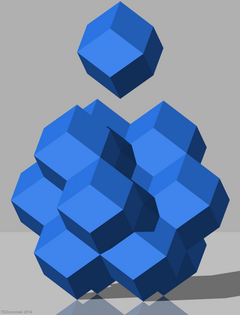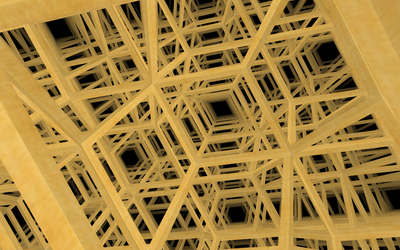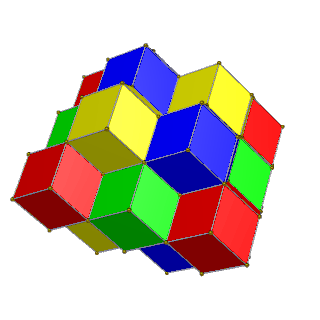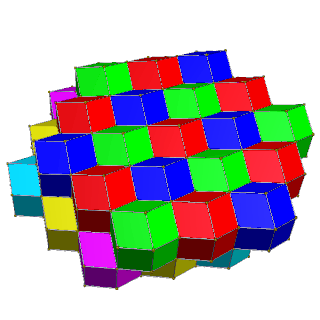Rhombic_dodecahedral_honeycomb
Rhombic dodecahedral honeycomb
Space-filling tesselation
The rhombic dodecahedral honeycomb (also dodecahedrille) is a space-filling tessellation (or honeycomb) in Euclidean 3-space. It is the Voronoi diagram of the face-centered cubic sphere-packing, which has the densest possible packing of equal spheres in ordinary space (see Kepler conjecture).
| Rhombic dodecahedral honeycomb | |
|---|---|
 | |
| Type | convex uniform honeycomb dual |
| Coxeter-Dynkin diagram | |
| Cell type |  Rhombic dodecahedron V3.4.3.4 |
| Face types | Rhombus |
| Space group | Fm3m (225) |
| Coxeter notation | ½, [1+,4,3,4] , [4,31,1] ×2, <[3[4]]> |
| Dual | tetrahedral-octahedral honeycomb |
| Properties | edge-transitive, face-transitive, cell-transitive |








